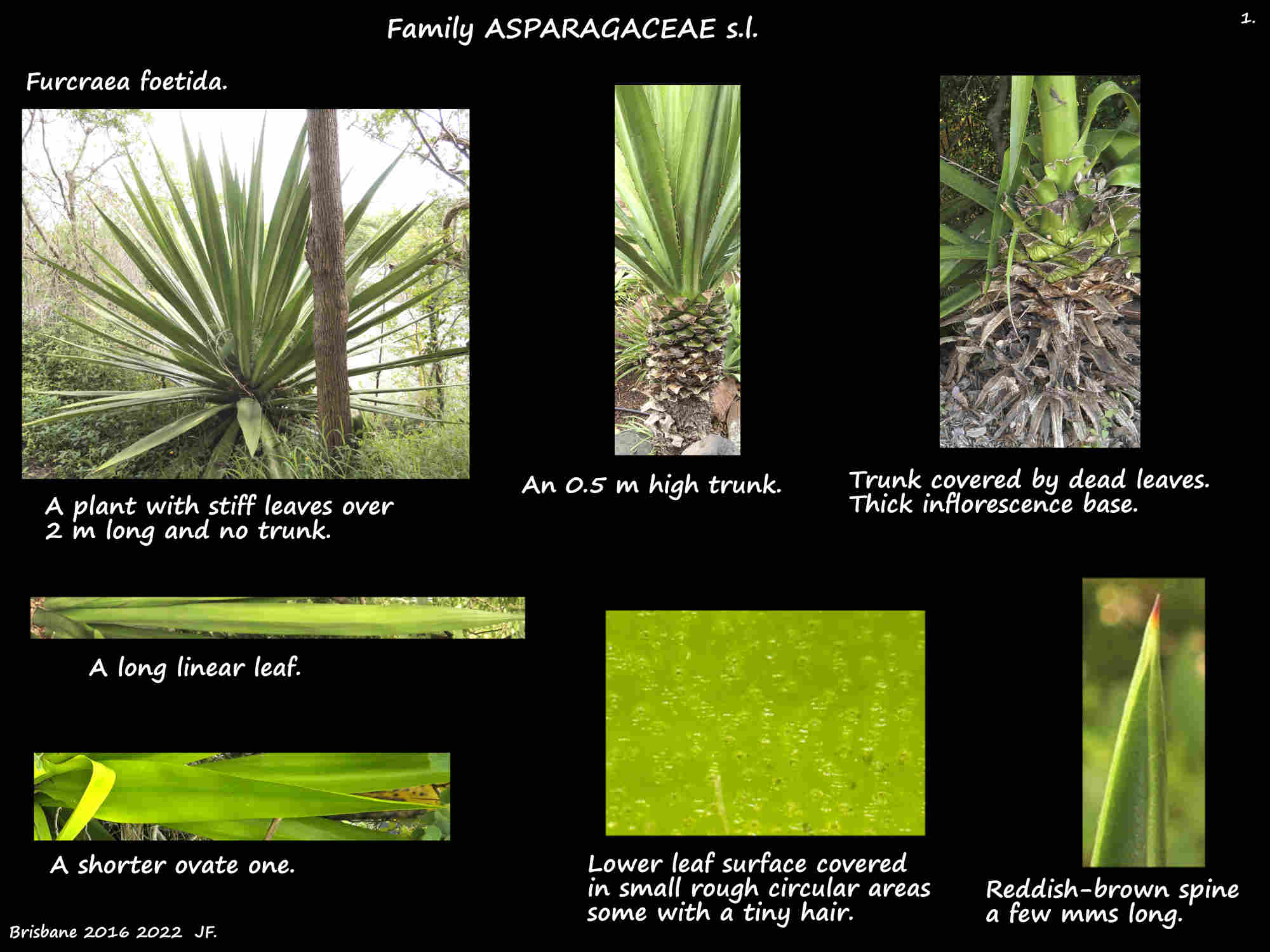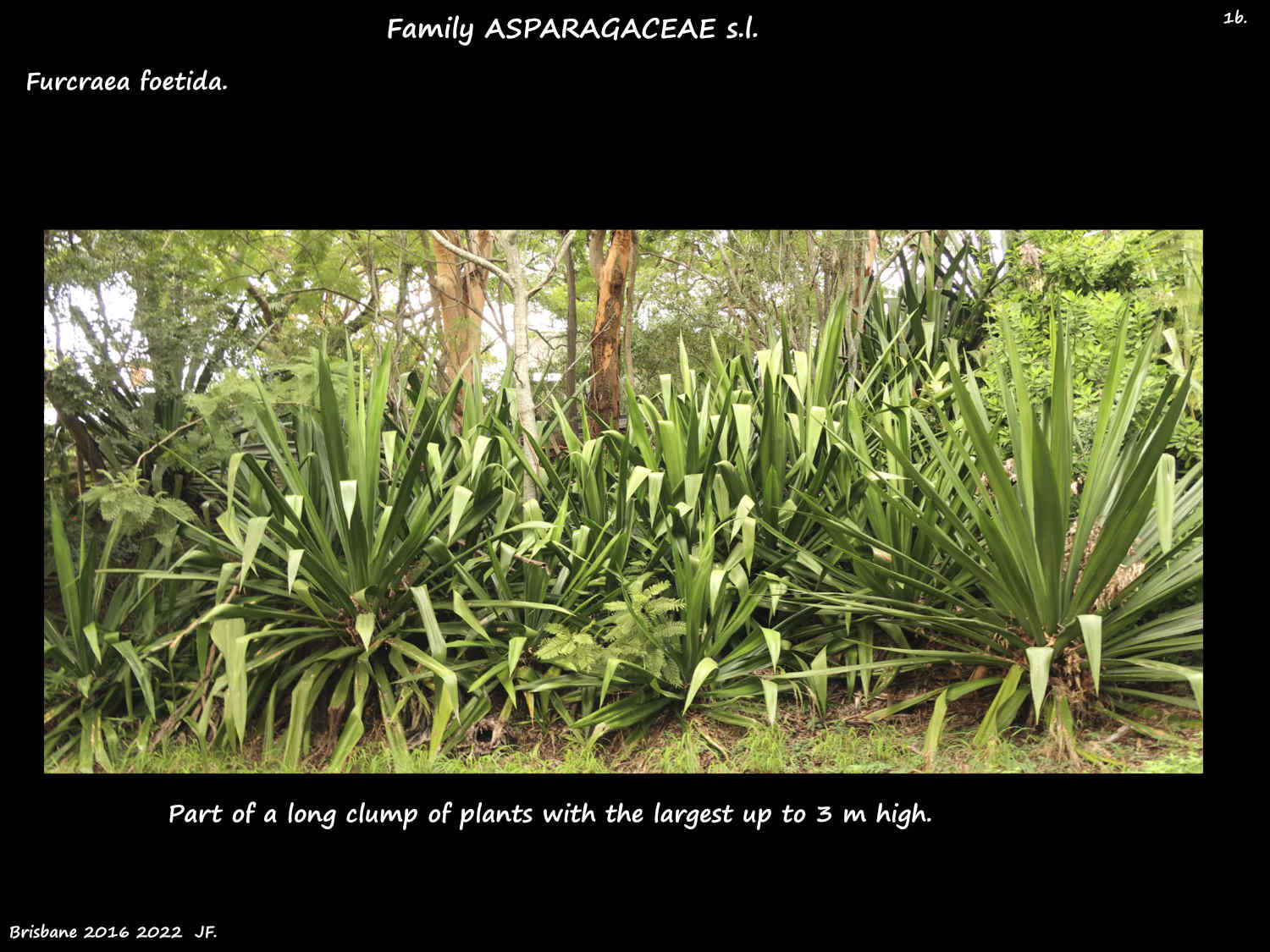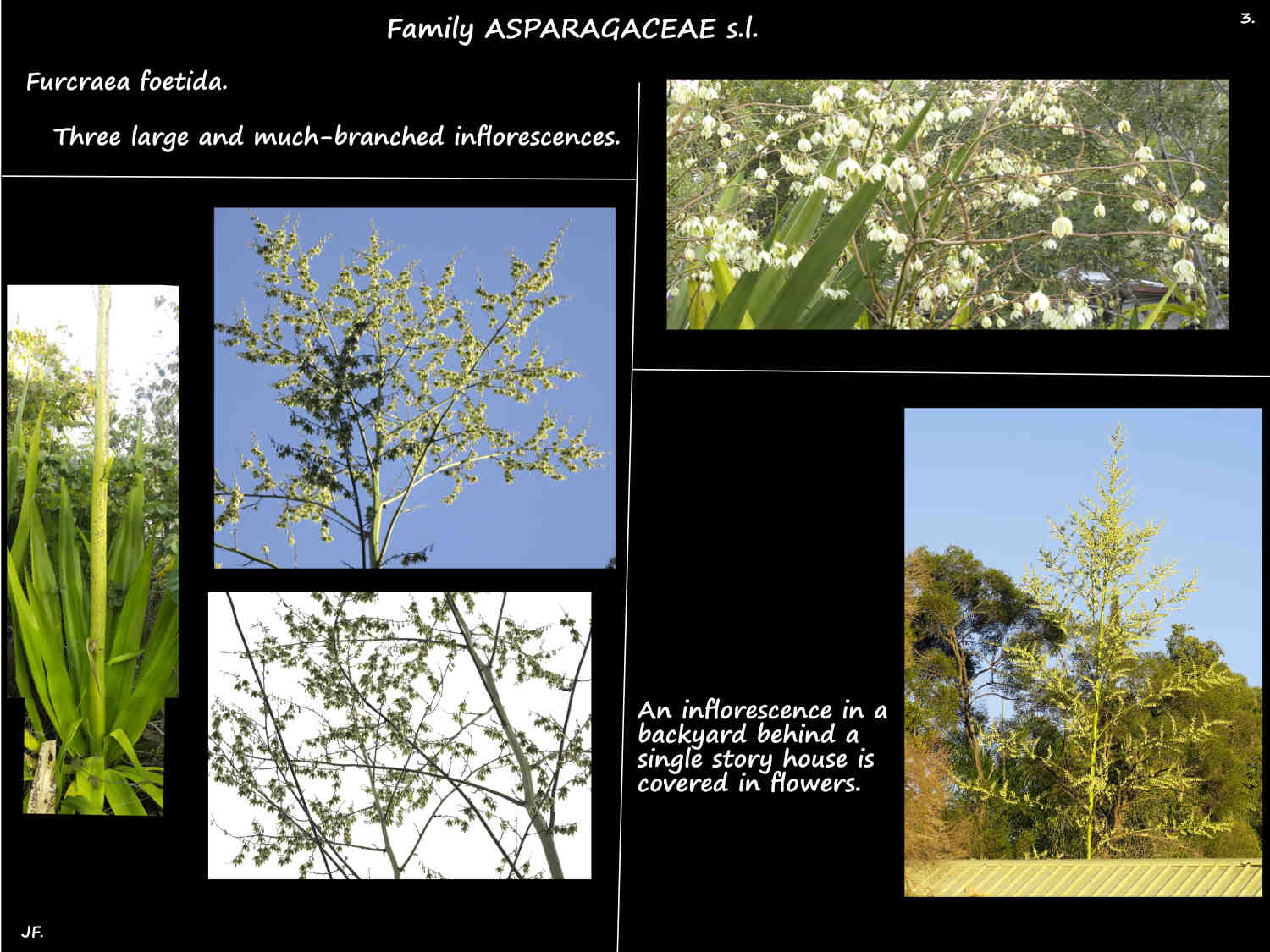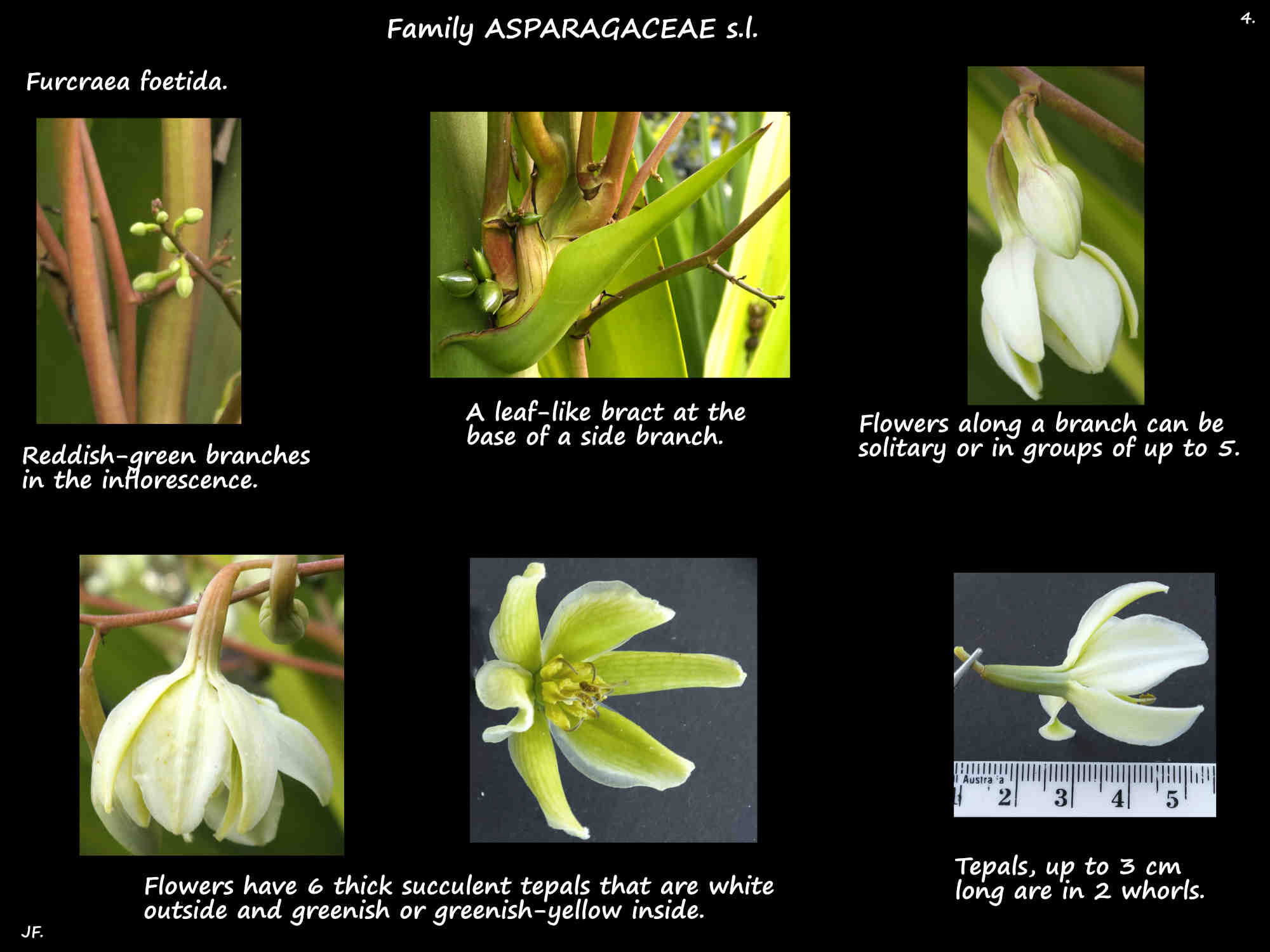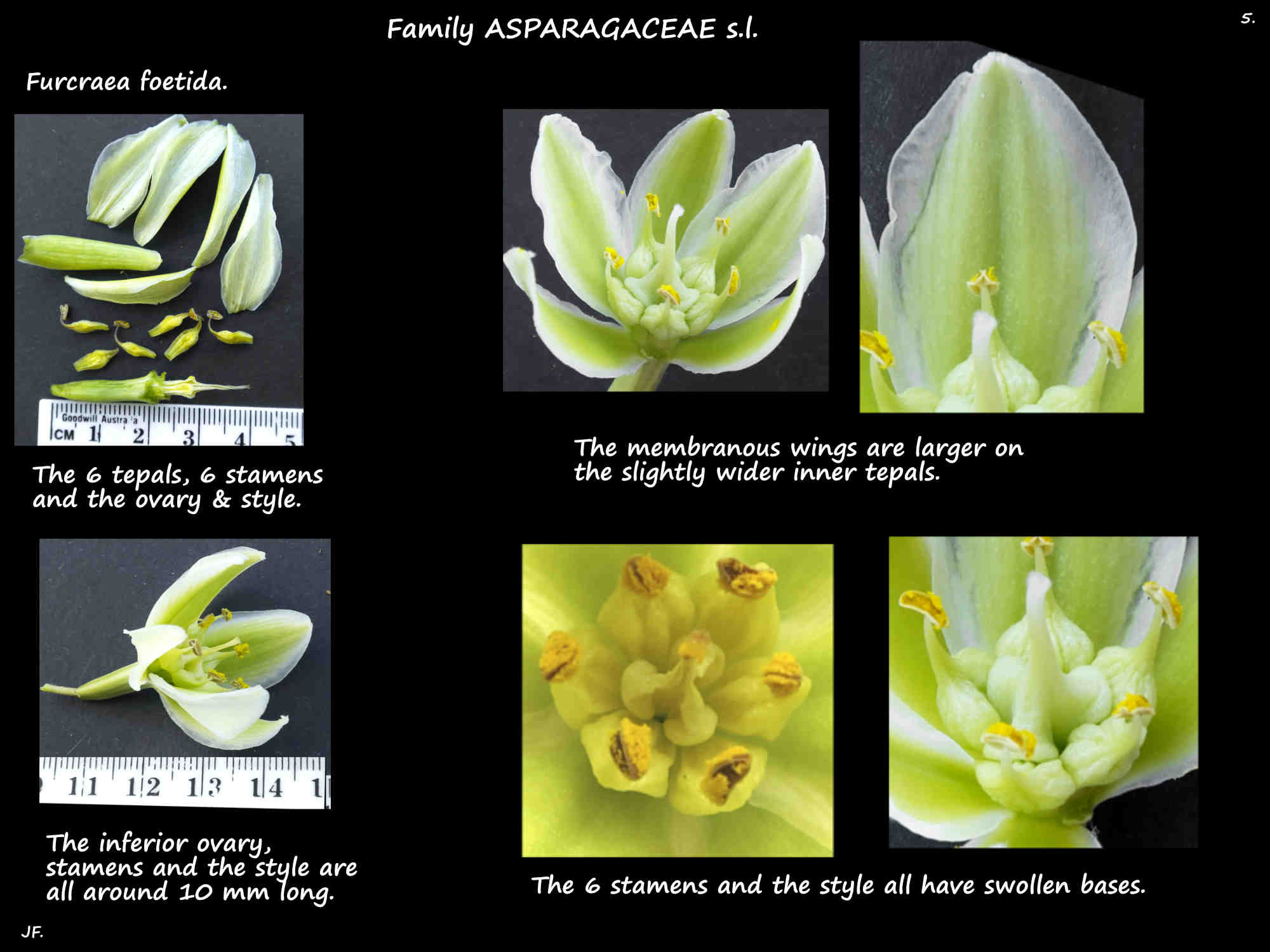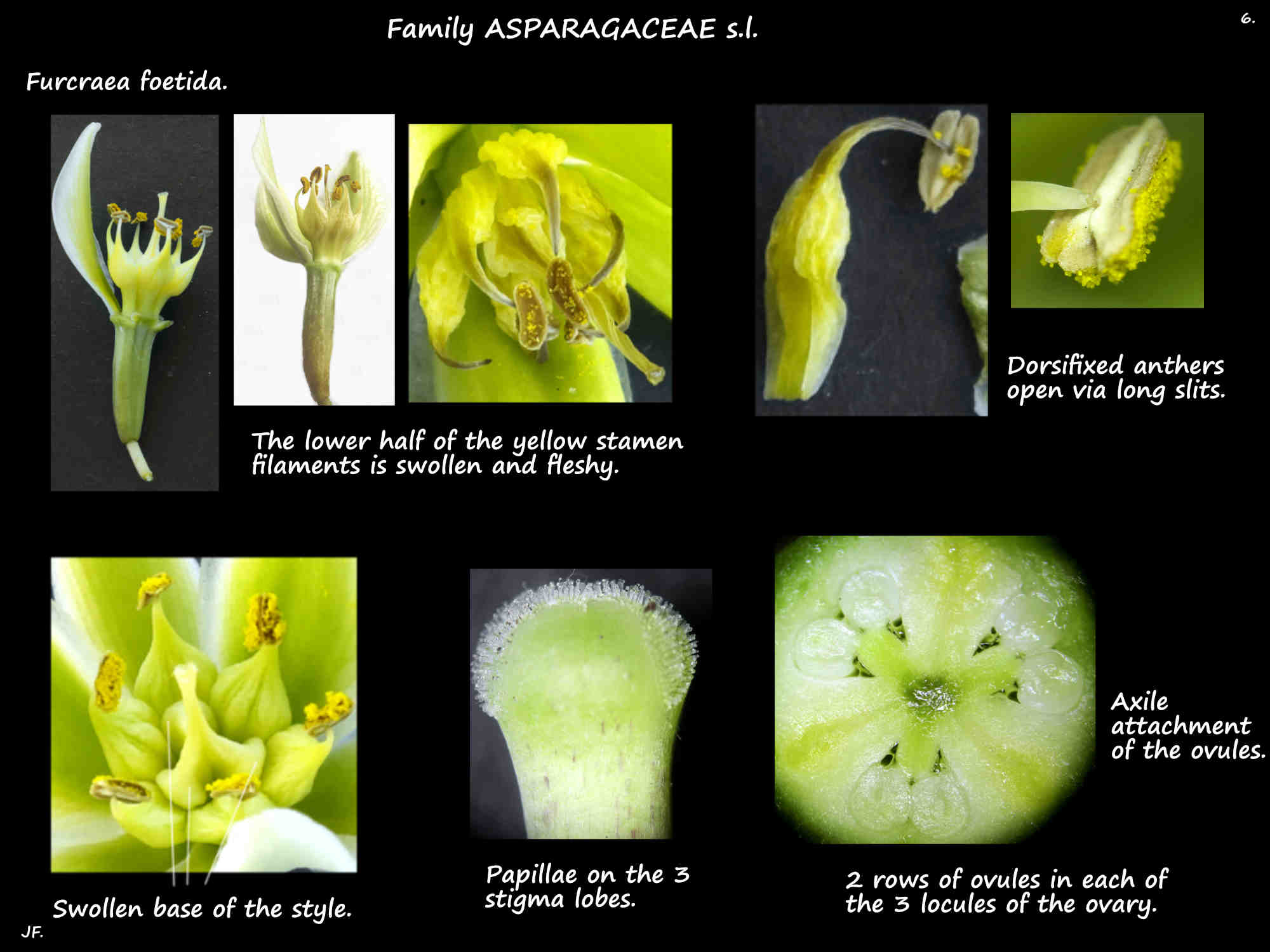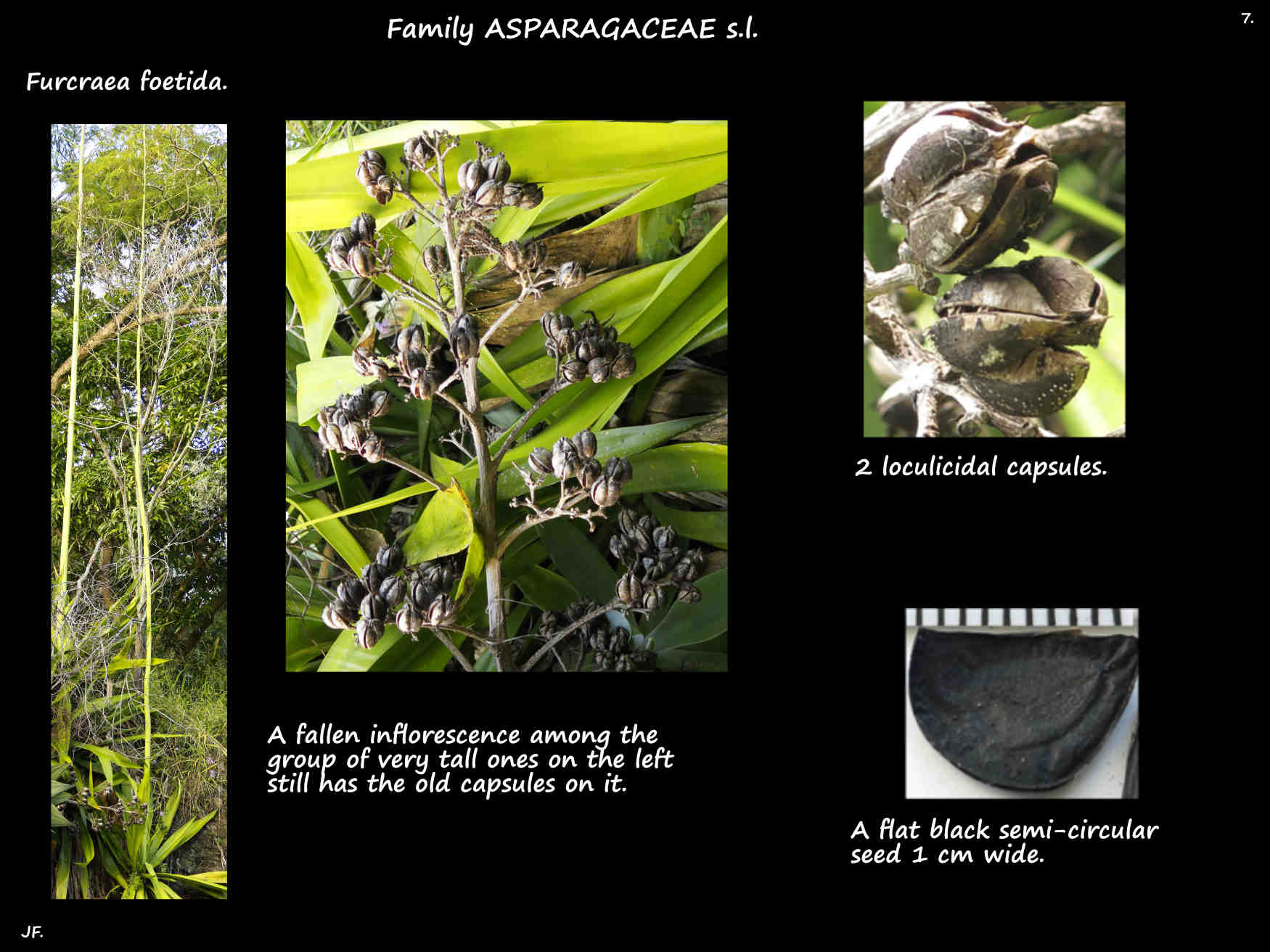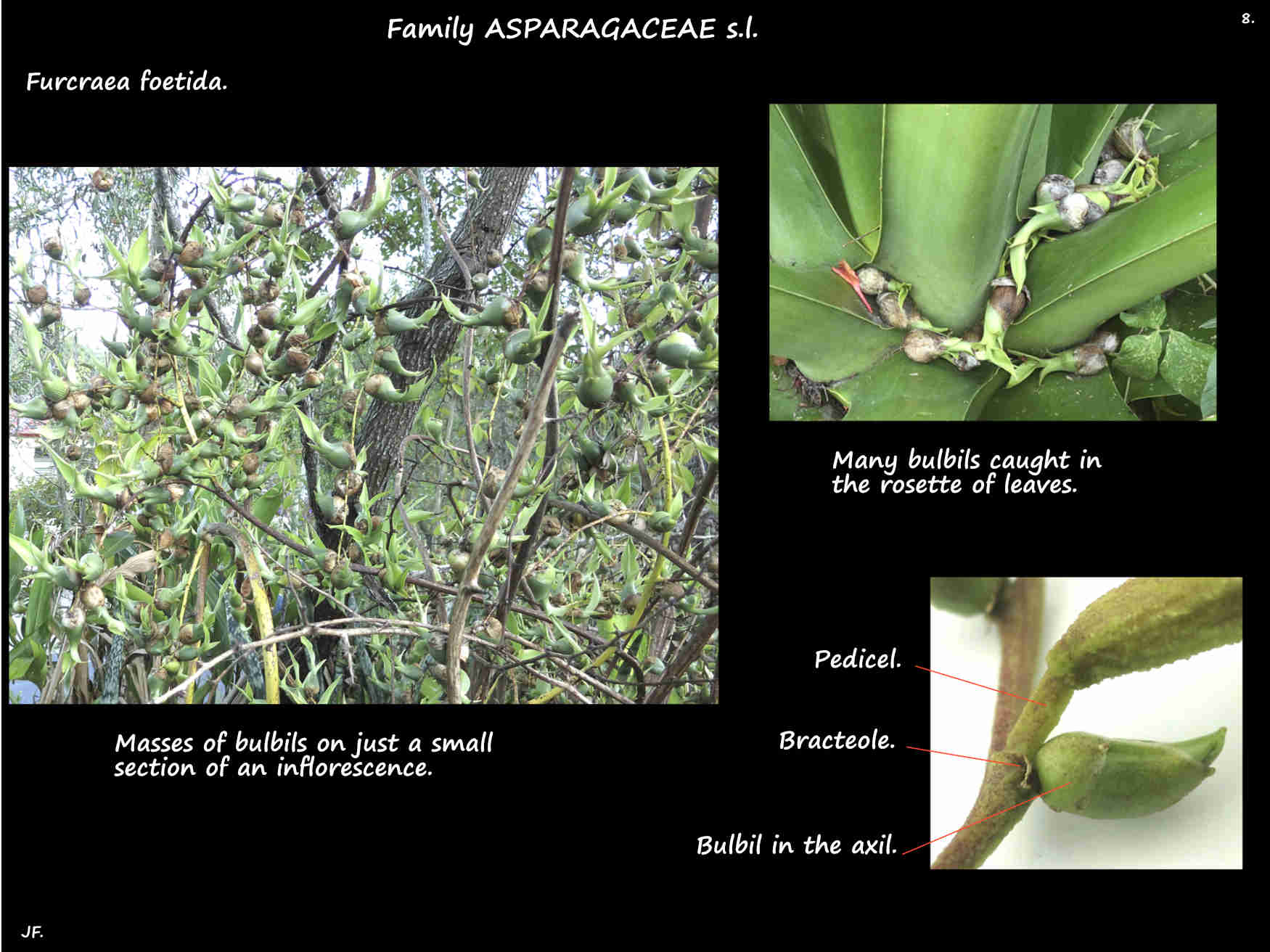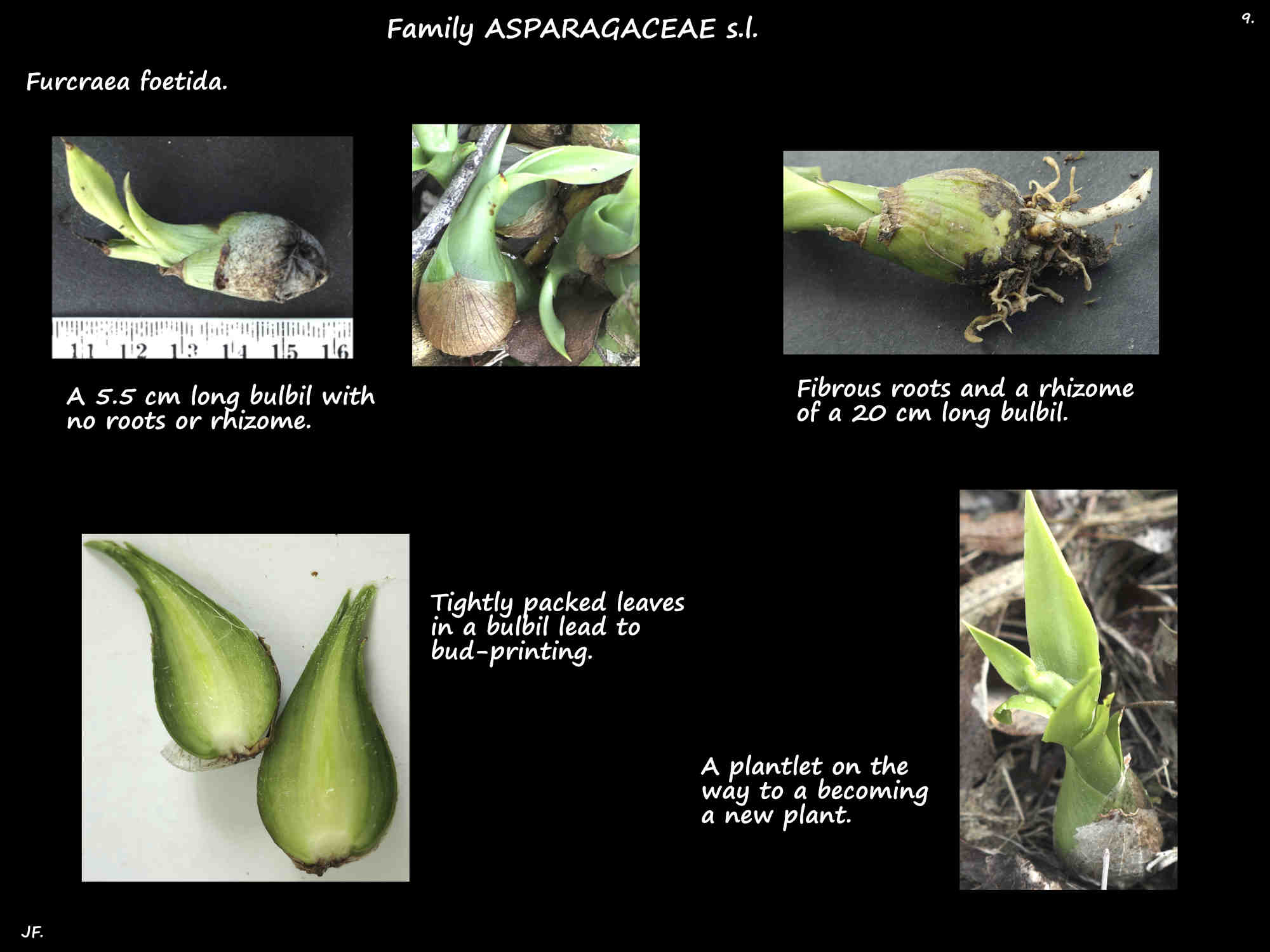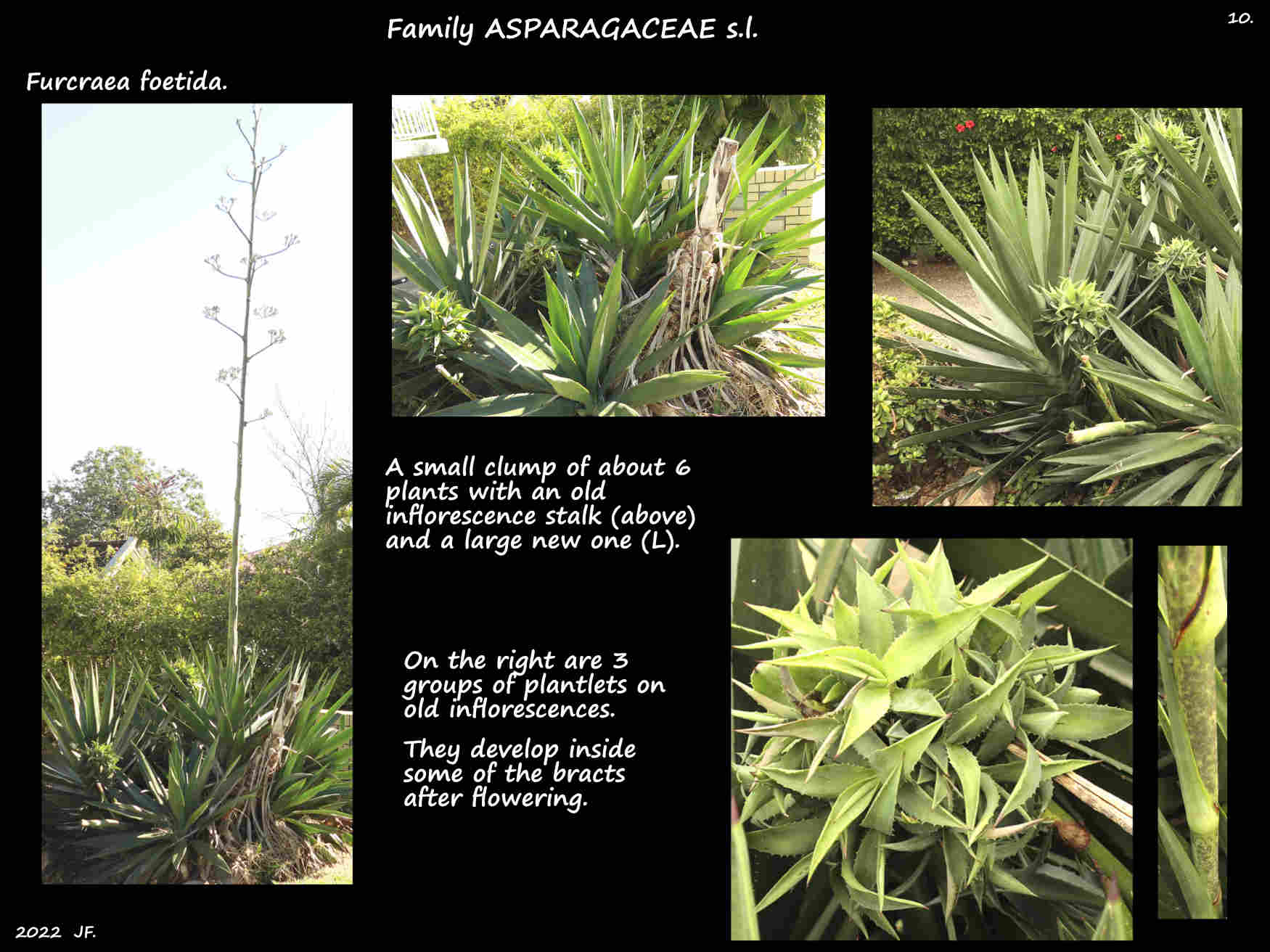Furcraea foetida.
Mauritius-hemp or False agave has been known as Agave foetida and Aloe foetida.
Originally a garden ornamental it is now naturalised in S. E. Queensland where it is an environmental weed.
They are a succulent perennial plants forming a dense rosette of leaves.
There is usually no stem or trunk but there may be one up to around 1 m high that is often hidden by dead leaves.
The alternately arranged leaves are erect and semi-erect.
They are sword-shaped, linear or oblanceolate and up to 2.5 m long and 20 cm wide.
The tip has a reddish spine around 6 mm long.
The edge may be smooth but some leaves usually have a few recurved prickles under 1 cm long near the base.
The upper surface is a bright, shiny green and the lower surface feels rough.
The massive terminal inflorescence can be up to 13 m tall.
The side branches on the upper half are themselves much-branched.
There is a small leaf-like bract at each division.
(The larger inflorescences are much bigger than those of Agaves.)
The pendant flowers are on pedicels up to 1 cm long with a bracteole at the base.
The flowers, up to 4 cm long have 6 thick fleshy tepals in 2 whorls.
The tepal bases bases are fused for a very short distance and the ellipsoidal lobes are spreading.
The inner lobes are slightly wider than the outer ones.
They are mainly white on the outside and a yellowish-green inside.
There are 6 stamens with 5 mm long anthers on 10 mm long filaments.
The lower half of the yellow filaments is wide, thick and fleshy.
The inferior ovary, with 3 locules is up to 1.5 cm long.
Each locule has 2 rows of ovules with axile placentation.
The 10 mm long apical style has a 3-lobed stigma with papillae on it.
The loculicidal capsules have numerous flat black seeds in each of the 3 chambers.
Most reproduction is via bulbils or plantlets.
These develop inside the base of the bracteoles after flowering has finished.
When around 6 to 15 cm long they fall off and, if landing on a suitable substrate grow into a new plant.
The original plant dies over the following year.
J.F.
